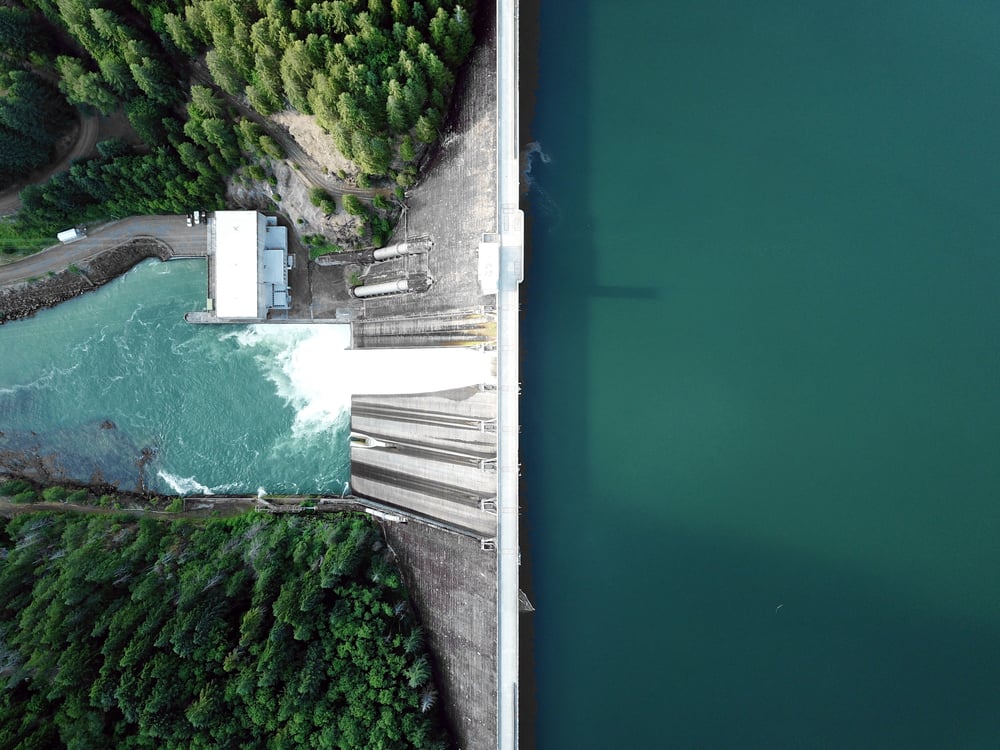
The future of energy storage
Energy storage is an essential part of future energy systems. There are many reasons why, so let's have a closer look at what this future may look like.
Reduction of carbon emissions is a must
The world is seeing a shift in energy production. Until recent years, coal, gas, and oil have been an essential part of heating and electricity production in most parts of the world. Carbon emissions have been plummeting since the industrial revolution.
We have reached a point where the consequences of these carbon emissions have become apparent. A climate crisis seems unavoidable. Damage control is necessary to not further harm the environment.
Reducing greenhouse gas emissions, substituting fossil fuels with renewable sources, and transforming our energy systems to come from clean, sustainable sources, have become the goal.
Increasing the amount of clean energy in the energy mix is, in other words, mandatory to limit global warming to below 2°C.
Unstable renewable energy
The three renewable energy sources of water, sun, and wind will grow in the coming years. Especially, sun and wind power growth is happening at a large scale as technology is getting better and cheaper.
Production of energy from water is relatively stable as it is possible to “store” water but is still dependent on rain. Hydropower is only possible in areas with access to rivers and waterfalls. Making reservoirs in dams is an excellent way to “store” hydroelectric power, as seen in different dams in Norway, Ghana in the Volta dam, Egypt in the Aswan dam, and many other places in the world.
The production of energy from wind and solar is unstable. There is no production when the sun does not shine, or the wind does not blow. When there is a lot of wind, or the sun is shining from a sky with no clouds, there can be an over-production of power. Production has to be curtailed, meaning energy production must be held back, as it is greater than demand, leading to possible production waste.
Also, there is a discrepancy between supply and demand from wind and solar. Solar production usually peaks at midday, while wind usually peaks at night. On the other hand, consumption tends to peak in the morning and the evenings.
In addition, the energy from these two sources lacks inertia. Inertia affects the frequency of the electricity grid and is created by the large, rotating masses of, e.g., a hydropower plant when its turbines are turning. The lack of inertia leads to a fall in the grid frequency - which ideally is 50 Hz, and can lead to power outages if not amended.
Why is energy storage so important?
The International Energy Agency (IEA) estimates that energy storage capacity needs to be increased from 140 gigawatts (GW) in 20214 to 450 GW in 2050.
Today, about 3 to 4 percent of the energy generated is stored.
In other words, there is a massive potential for energy storage that could make up for some of the needs we have for clean energy in the future up to 2050.
In addition to making renewable energy more available and efficient, storage can also improve energy security and the resilience of energy supply systems.
Deploying battery and hydrogen storage can stabilize the gap between supply and demand, and also long-term storage can help alleviate the problem of energy curtailment.
Storage technologies are still in their infancy
There are three storage technologies at the forefront of the transition towards energy storage: hydrogen, thermal and Li-ion batteries.
The three technologies have different power capacities and energy storage duration.
Thermal energy storage is well-suited for long-term energy storage and is suitable for heating and cooling homes. This type of storage is ideal for storage over days, months, and possibly even years.
Hydrogen, i.e., the transition of electricity to gas, is also deemed suitable for long-term storage, and in the future, even for transportation of energy from one place to another.
Lastly, lithium-ion batteries are suitable for short-time energy storage, meaning hour-to-hour and day-to-day storage, with the capacity of rapid discharge and recharge from the grid.
Future energy systems look different
There is a change happening in the way we produce, store and use energy. The future has to be renewable and sustainable. Storing energy is necessary to make our future less carbon-dependent and reduce emissions to save our environment.




